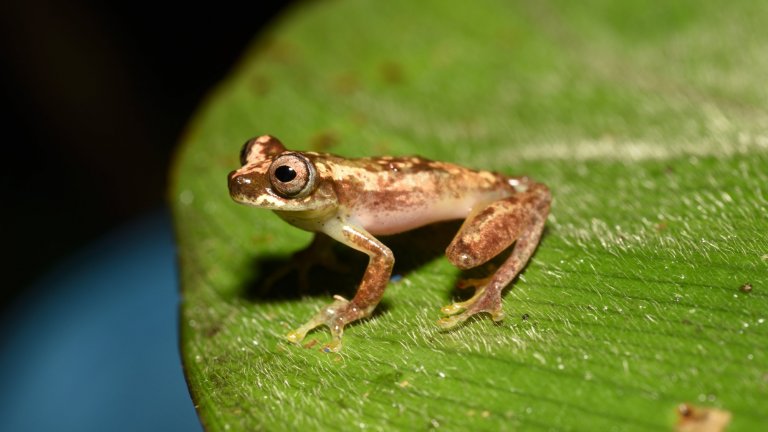
© Renaud Boistel / IPHEP / CNRS Images
View the mediaScientific news
April 28 is “Save the Frogs Day”: the largest global day of awareness and action for amphibians, which are highly endangered.

© Renaud Boistel / IPHEP / CNRS Images
View the mediaJust because they don't - all? - turn into prince charming doesn't mean they shouldn't be protected. The frogs and other toads that croak near our ponds, or even in our gardens, are unfortunately becoming increasingly rare. More than half of Europe's amphibians are estimated to be in danger, more than mammals and birds for example. The causes are multiple and look like the usual suspects: destruction of their natural habitats by humans, pollution, increasing presence of invasive species which are outstripping them in this vast game of Risk that is an ecosystem... There is a red alert, especially since frogs, which live at the crossroads of several types of habitats (dry and humid) and are very sensitive to chemicals, acting as a reliable barometer of the state of the entire biosphere.
This is why, since 2009, 28th April has been designated as Save the Frogs Day! It is, quite simply, the world's largest day of amphibian conservation education and action. Everyone is therefore encouraged to organise their own event, or to join those taking place near them.
And why not take the opportunity to get involved in one of the activities organised in France by Fréquence Grenouille until 31st May? You could take part in constructing a toad underpass, which allows amphibians to cross roads and paths safely, or simply learn about saving their habitats, including in your own garden.
In short, there is plenty to do. So don’t hesitate to give it a go, because, who knows, in the end the prince(ess) charming of a frog in distress might be you…
Our work is guided by the way scientists question the world around them and we translate their research into images to help people to understand the world better and to awaken their curiosity and wonderment.